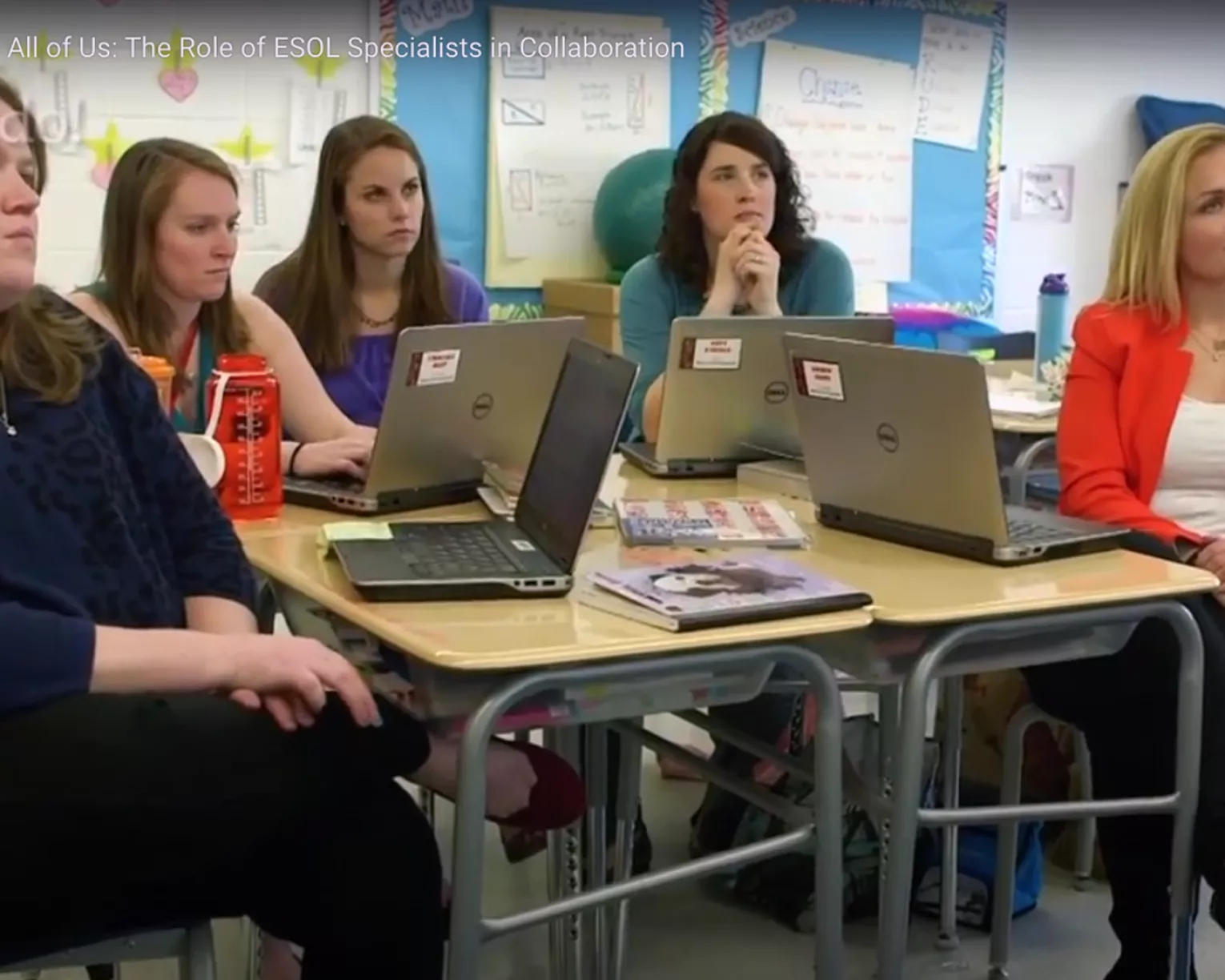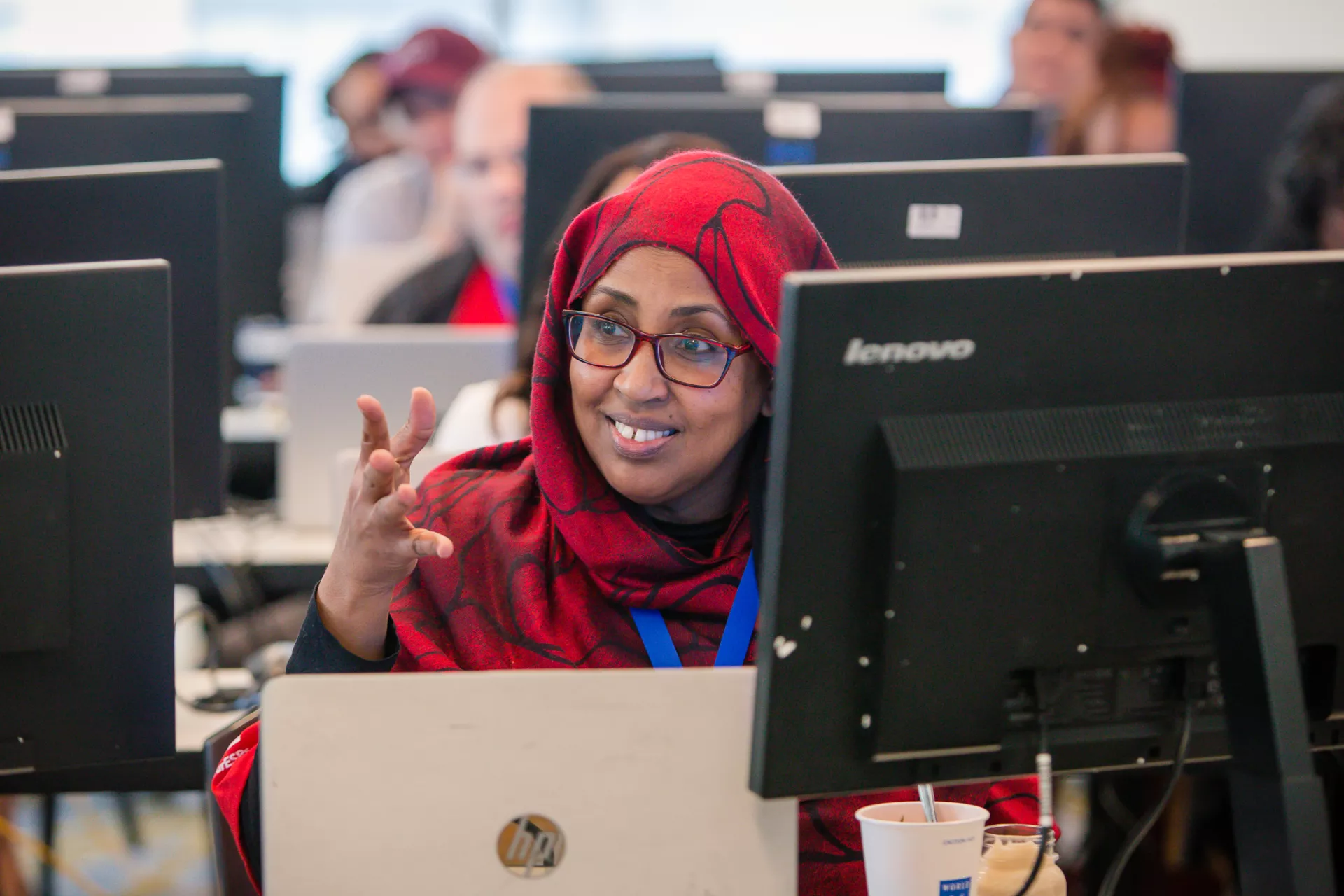Paraprofessionals and education support professionals (ESPs) play a critical role in supporting English language learners (ELLs) in classrooms across the country. This support can have even more of an impact when it is part of a collaborative, positive partnership with classroom teachers and ELL specialists in their school community.
However, sometimes that support is overlooked, misunderstood, or underutilized. When other educators don’t take the time to get to know a paraprofessional’s skills and strengths, they miss out on a valuable resource. Here are some ideas for how classroom teachers and ELL specialists can build partnerships with paraprofessionals on behalf of ELLs regardless of the setting, compiled from the following veteran educators:
- Joni Anderson, ELL Paraprofessional
- Ingrid Miera, ELL Paraprofessional
- Michelle Lawrence Biggar, ELL Educator
Creating Strong Partnerships
1. Get to know the paraprofessional in your classroom
Relationships are the foundation of collaboration. Get to know each other by introducing yourself (ideally before instruction has started) and sharing a bit about yourself. You may also wish to talk a little bit about your experience with ELLs and why you enjoy working with ELLs. If this is your first time working with a paraprofessional, let them know you are new to this kind of collaboration and ask them what has worked well in other classrooms they have supported. In addition, look for ways to make sure the paraprofessional feels welcome in your classroom or work space.
2. Get to know the paraprofessional’s strengths
Paraprofessionals often bring important strengths to their work with ELLs. These may include strong student and family relationships, experience in providing targeted academic support and differentiation, behavior management skills, advocacy skills, and language skills.
3. Discuss what classroom support will look like
Discuss how the paraprofessional will be supporting students. Will the support be one-on-one, or in small groups? Will the paraprofessional be walking around the room? If the paraprofessional is bilingual, how and when will they be providing language support? Ensure you both have the opportunity to share prior arrangements that have worked well in the past.
4. Invite the paraprofessional’s input
Your paraprofessional is a resource, especially if they have ELL experience. In fact, they may have more ELL experience than their partner teachers. Invite their suggestions and let them know that their input is welcome; they are more likely to share their suggestions if they feel comfortable doing so.
5. Clarify how paraprofessionals will communicate with families
Clarify how and when paraprofessionals are expected to communicate with families, especially if they are bilingual. Keep in mind that while paraprofessionals may speak multiple languages and may be communicating with families, they should not be relied upon for translation or interpretation if that is not part of their official job description and training. If you find that others are calling upon your paraprofessional for interpretation and it’s interrupting their class time, look for ways to curb that practice and establish boundaries that protect the paraprofessional’s time.
Note: See more in this helpful chart about the difference between bilingual staff and interpreters. Also keep in mind that schools are legally required to provide families with information in their languages. If you feel that appropriate language access is not being provided, bring your concern to an administrator.
Communication and Planning
6. Establish clear communication procedures
Establishing open and clear communication is crucial to any kind of partnership. Some things you might wish to discuss early are how you both prefer to communicate and how to handle ongoing communication, feedback, and adjustments that might be needed. In addition, keep in mind that paraprofessionals may have other roles and responsibilities; respect those commitments and work together to find solutions to any scheduling challenges.
7. Include team members in planning, collaboration, and meetings
When possible, include paraprofessionals in lesson planning so that you are able to align instruction and support. If it’s not possible to meet together, you can collaborate by sharing lesson plans and materials over email and online. You may also wish to consider whether paraprofessionals’ schedules allow for them to attend grade-level, department, or team meetings. If you need to make a case for this kind of participation, collaborate with paraprofessionals to gather data and examples of how their participation can support students.
Finally, keep in mind that paraprofessionals who are supporting special education students should be included in student meetings and conversations with families; they are likely to have valuable insights and information, as well as updates from families.
Advocacy and Professional Growth
8. Attend professional development and training as teams
Paraprofessionals will benefit from ELL professional development. When possible, ensure that they are included in school-wide training so that everyone is on the same page.
Paraprofessionals, classroom teachers, administrators, and ELL specialists can all play a role in advocating for them to be included in those opportunities. Paraprofessionals can also benefit from attending district, state, or national conferences as well.
Finally, keep in mind that paraprofessionals who work frequently with ELLs may also be in a position to lead training for colleagues, which can spotlight their expertise and offer leadership opportunities.
9. Lift up paraprofessionals’ strengths
Paraprofessionals are a critical part of school communities. Lift up their contributions by showing your appreciation, sharing their strengths and successes with others, highlighting examples of your collaboration, ensuring that they are included in key meetings, and advocating for their fair treatment in different settings.
10. Advocate for a culture of respect
All educators and staff members have a part to play in creating a culture of respect within a school community. Talk with paraprofessionals about how they feel within the community, and bring any issues to the attention of administrators so they can be addressed.
Voices of Educators
"I have been fortunate to have worked under a principal that valued all staff as educators, and our students know that all adults are teachers/educators. We have an important role in the school system. ESPs are some of the most flexible people I know. Their schedules can change daily and they are able to adapt to new situations. We build relationships, are caregivers, and always do what is best for our students."
— Joni Anderson, ELL paraprofessional
"My teachers were great and I’ve always been very involved in their lesson planning and IEP writing. As a para, I was new to IEP writing at first, but I was always asked about my student’s goals, what he was achieving, what his strengths were, and what his weaknesses were. And I was the only one who knew the answers to those questions. After a few years, I realized, ‘I can write this IEP because I know my student.’"
— Genesis Gonzalez, Special Education teacher and former paraprofessional
Video
How I provided tech support to multilingual families during COVID-19
Carla Fernandes, a multilingual paraprofessional in Brockton Public Schools (MA), speaks Cape Verdean Creole and Portuguese. In this interview clip, she describes how she helped families navigate new technology during COVID-19 and how the word spread that she could provide important support.
Engaging the whole school staff in trauma-informed practice
Every person who works in a school makes an impact on a child’s life. Ricky Robertson explores why a whole-school approach is needed to address the impact of adverse childhood experiences and trauma. He also discusses the valuable roles that Education Support Professionals (e.g., paraeducators, transportation staff, etc.) and Specialized Instructional Support Personnel (e.g., school counselors, nurses, etc.) play in creating supportive learning communities. In this episode, Mr. Robertson highlights ways that all faculty and staff can make sure that every student
is known by name and by need.
Suggested Further Reading
Are you an affiliate?



